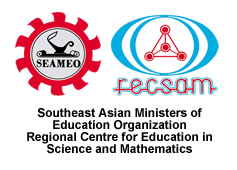Editorial Board (Issue 1 - 2006)
Dr Azian T.S. Abdullah (Advisor)
Dr Chona Sarmiento (Chief Editor)
Dr Cheah Ui Hock (Editor)
Ng Khar Thoe (Editor)
Contents
1. The Theory of Multiple Intelligences and Its Applications in Science Classroom
Ong Eng Tek & Yeam Koon Peng
This article aims to give an overview on the Theory of Multiple Intelligences – a theory that was propounded by Howard Gardner in his widely cited books, “Frames of Mind” (Gardner, 1983) and “Intelligence Reframed” (Gardner, 1999). A Multiple Intelligences Profile Assessment is provided to help teachers gauge “where their students are”, thus providing them information on every student intelligence profile, which in turn, serves to inform them the best way forward to personalise and maximise learning. This article ends with some lesson ideas on teaching primary school students various parts of the body.
2. The role of science notebooks in La main à la pâte
Foo Lay Kuan & Nicolas Poussielgue
The use of science notebooks as part of science instruction has been a global practice in many science classrooms for many decades. In the traditional classroom, teachers associate the use of the science notebook for recording students’ work after a “recipe following” practical session in the science laboratory. However, research shows that the science notebook transcends its traditional role if it is used for purposeful recording and thoughtful reflection in a variety of learning situations that promote scientific inquiry. This article discusses the role of the science notebook within the context of La main à la pâte science education programme as an ongoing documentation of the development of children’s ideas as they move through the process of scientific inquiry.
3. Using Calculators in Primary Mathematics
Lily Ann Cabanilla-Pedro
Evidence from research has proven calculators to be quite effective tools for problem solving, reinforcement of computational skills, pattern recognition, and number sense. Yet, many teachers continue to believe that they can bring more harm than good in the learning of mathematics, therefore their use for instruction should never be encouraged. This paper presents various possibilities on how the calculators can be incorporated in the teaching and learning of mathematics. Sample calculator activities are included to provide concrete examples of how calculators can aid in developing and reinforcing concepts in mathematics. Several concerns raised by teachers as regards the use of calculators and what research says about these are discussed.
4. Exploring Three-dimensional Shapes Using Student-Centred Approaches
Susan dL Oribiana
(No abstract provided)
5. Integrating 'Learning Together' with outdoor science activities
Ng Khar Thoe & Chut Shi Lin
Outdoor science activities incorporating field studies have increasingly been given due emphasis by curriculum developers and educators. “Science Across Asia Pacific” (SAAP), part of “Science Across the World” (SAW) is an exemplary international programme which encourages students’ involvement in science learning via field studies and project-based learning to enhance their awareness of the interaction of science and technology with the environment and society. This article provides a draft outline on how outdoor science activities could be taught via the integration of “Learning Together” approach. In brief, the outdoor field studies activities could be implemented in five steps, i.e. (1) Teacher Preparation (determining the site and focus of field study, teaching aids, objectives, required skills and activities needed); (2) Preparation of outdoor field study (revision of related concept and students’ existing skills, discussion on what needs to be recorded, preparation of worksheets and activity sheets, dividing class according to “learning together” groups with briefing on various roles); (3) Outdoor field study (implementation of activity as planned, gathering of data and related materials, managing the performance of learners); (4) Activity after field study (group activities for ‘learning together’ or group project work as an extension activity via the production of report or chart with group presentation) and (5) Conclusion (discussion of the learning outcomes to consolidate new concepts learned, and other related issues to enhance awareness on environmental issues).
6. Lessons for Promoting Scientific and Technological Literacy (STL) for Lifelong Learning
Doko Suyatmiko, Sabri Hj Mohd Salleh, Kheang Boprik, Khamkheo Latsavong, Ana Lisdiana & Chona Sarmiento
These lessons highlight the need to broaden students’ views on STL—its meaning in the real life context and applications in the classrooms for the improvement of the teaching-learning process. Integrated in each lesson are learning concepts and approaches on how teachers can address high order thinking skills and critical thinking (through the activities outlined). Different formats of assessing students’ learning are also introduced in the lessons.

